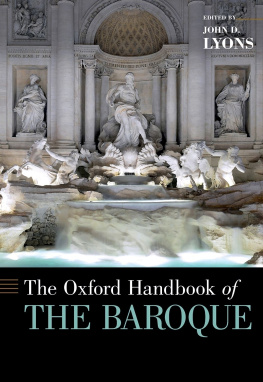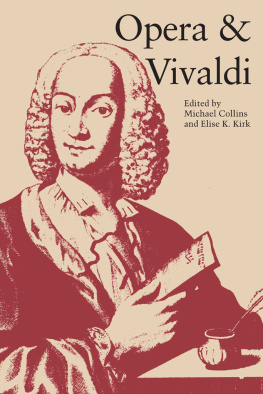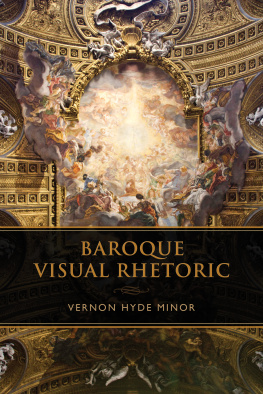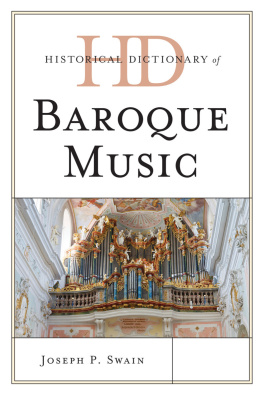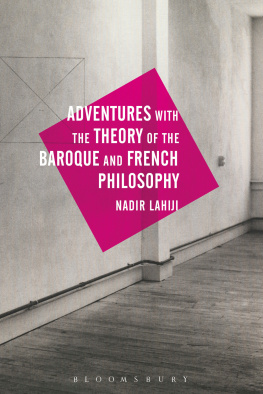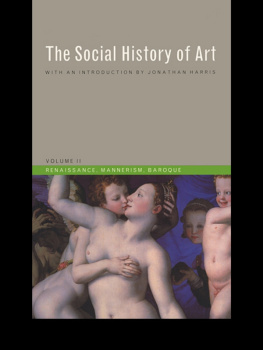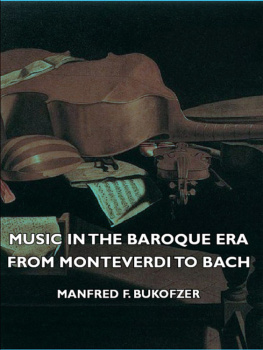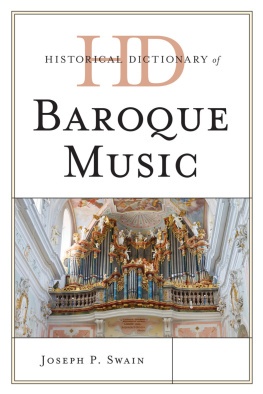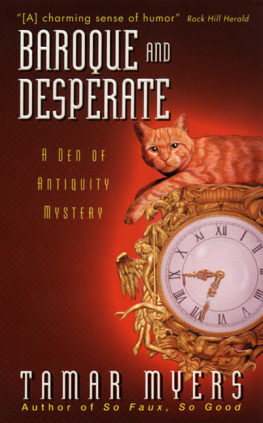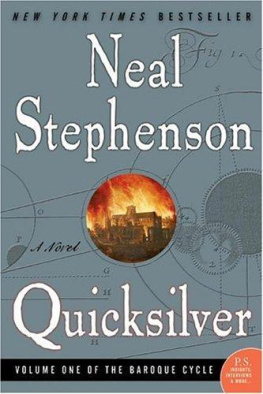The Oxford Handbook of
the Baroque

Oxford University Press is a department of the University of Oxford. It furthers the Universitys objective of excellence in research, scholarship, and education by publishing worldwide. Oxford is a registered trade mark of Oxford University Press in the UK and certain other countries.
Published in the United States of America by Oxford University Press 198 Madison Avenue, New York, NY 10016, United States of America.
Oxford University Press 2019
All rights reserved. No part of this publication may be reproduced, stored in a retrieval system, or transmitted, in any form or by any means, without the prior permission in writing of Oxford University Press, or as expressly permitted by law, by license, or under terms agreed with the appropriate reproduction rights organization. Inquiries concerning reproduction outside the scope of the above should be sent to the Rights Department, Oxford University Press, at the address above.
You must not circulate this work in any other form and you must impose this same condition on any acquirer.
Library of Congress Cataloging-in-Publication Data Names: Lyons, John D., 1946 editor.
Title: The Oxford Handbook of the Baroque / edited by John D. Lyons. Description: New York, NY : Oxford University Press, [2019] | Includes bibliographical references and index.
Identifiers: LCCN 2018045242 | ISBN 9780190678449 (hardcover) | ebook ISBN 9780190678470
Subjects: LCSH: Civilization, Baroque.
Classification: LCC CB401 .O94 2019 | DDC 940.2/52dc23 LC record available at https://lccn.loc.gov/2018045242
135798642
Printed by Sheridan Books, Inc., United States of America
Contents
Introduction: The Crisis of the Baroque
John D. Lyons
Decentering the European Imaginary: A Baroque Taste for India
Faith E. Beasley
Line and Trait of the Baroque River
Tom Conley
Baroque Theatricality
Julia Gros de Gasquet
Water in the Baroque Garden
Stephanie Hanke
Fashioning the Baroque Male
Martha Hollander
Antinomies of the Twenty-First-Century Neobaroque: Cormac McCarthy and Demian Schopf
Monika Kaup
The Automaton
Jessica Keating
The Baroque City
David Mayernik
Surface and Substance: Baroque Dress in Spain and France, 16001720
Lesley Ellis Miller
Baroque Dance
Jennifer Nevile
Ibero-American Architecture and Urbanism
Paul Niell
Baroque Organ Music
David Ponsford
Ottoman Baroque
nver Rstem
Baroque Opera
Downing A. Thomas
Machine Plays
Hlne Visentin
Ornamentation
Michael Yonan
The Organization of Knowledge from Ramus to Diderot
Emmanuel Bury
Experience and Knowledge in the Baroque
Anthony J. Cascardi
Conversation and Civility
Delphine Denis
The Philosophers Baroque: Benjamin, Lacan, Deleuze
William Egginton
The Spanish Baroque Novel
Enrique Garca Santo-Toms
Baroque Tragedy
Blair Hoxby
The Baroque as a Literary Concept
Katherine Ibbett and Anna More
Baroque Discourse
Christopher D. Johnson
Classical Defense of the Baroque
Hlne Merlin-Kajman
The Baroque and Philosophy
Michael Moriarty
The Baroque as Anti-Classicism: The French Case
Larry F. Norman
Is There a Baroque Style of Preaching in Early Modern France?
Anne Rgent-Susini and Laurent Susini
Prayer, Meditation, and Retreat
Mette Birkedal Bruun
Baroque Sexualities
Gary Ferguson
Paradoxes: Baroque Science
Ofer Gal
Baroque Diplomacy
Timothy Hampton
The End of Witch-Hunting
H. C. Erik Midelfort
Time and Chronometry
Roland Racevskis
Court Spectacle and Entertainment
Guy Spielmann
The Baroque State
Barbara Stollberg-Rilinger
Saints and Baroque Piety
Thomas Worcester
This Handbook spans so many arts, media, disciplines, and languages that it would have been impossible to put it together without the generous help of many peoplemost particularly that of the contributors themselves. By generously sharing their expertise with the volume editor they made this project a truly collaborative one. Special thanks go to the two editors at Oxford Handbooks: Julia Kostova, for her encouragement and advice from the inception of this work, and to Elda Granata, who brought it to its happy conclusion. Evonne Levy provided many ideas in the early phase of planning, and Cecily Berberat oversaw the almost infinite number of details that needed to come together for the whole enterprise to take shape.
Faith E. Beasley is Professor of French and Womens and Gender Studies at Dartmouth College. A specialist of early modern French culture, she is the author of numerous books and articles on French women writers and salon culture, including Revising Memory: Womens Fiction and Memoirs in Seventeenth-Century France (1990), and Salons, History, and the Creation of Seventeenth-Century France: Mastering Memory (2006). Her book Versailles Meets the Taj Mahal: Franois Bernier, Marguerite de La Sablire and Enlightening Conversations in Seventeenth-Century France (2018), supported by a Guggenheim Fellowship, explores the effect that Frances encounter with India had on early Enlightenment thought, material culture, and literature.
Mette Birkedal Bruun is Professor of Church History at the University of Copenhagen. She is the author of Parables: Bernard of Clairvauxs Mapping of Spiritual Topography (2007), editor of The Cambridge Companion to the Cistercian Order (2012), and co-editor of several volumes, including Negotiating Heritage: Memories of the Middle Ages (2008) and Commonplace Culture in Western Europe in the Early Modern Period (2011). She was awarded the Carlsberg Foundation Research Prize in 2017.
Emmanuel Bury is Professor of French Literature at Sorbonne University. His research is devoted to the study of the relations between literature and society in France in the seventeenth and eighteenth centuries and to the study of the influence of the culture of Antiquity (pagan and Christian) on the culture of the French classical age, from humanism to the beginning of the Enlightenment. His earlier work focused on classical rhetoric and poetics and the theory of translation (in particular creative mistranslation, the Belles Infidles). His current work concerns learned discourse and the intellectual life of the Republic of Letters, with particular concentration on the relations between literature and philosophy (Lucianism, libertinage rudit, and philosophical dialogue).
Anthony J. Cascardi is Dean of Arts and Humanities at the University of California, Berkeley. He is also Professor of Comparative Literature, Rhetoric, and Spanish. He is former Director of the Townsend Center for the Humanities and of the Arts Research Center. His many books include Literature and the Question of Philosophy (1987), The Subject of Modernity (1992), Consequences of Enlightenment (1999), and Cervantes, Literature, and the Discourse of Politics (2012).
Tom Conley is Abbott Lawrence Lowell Professor of Visual and Environmental Studies and of Romance Languages and Literatures at Harvard University. He studies relations of space and writing in literature, cartography, and cinema. Among his many books are Film Hieroglyphs (1991, new edition 2006), The Graphic Unconscious in Early Modern Writing

